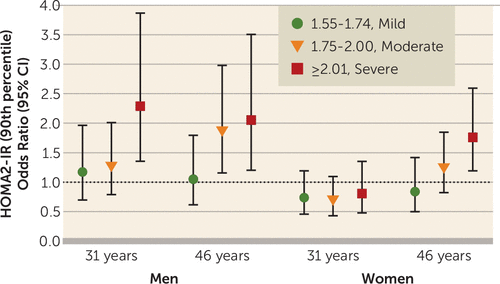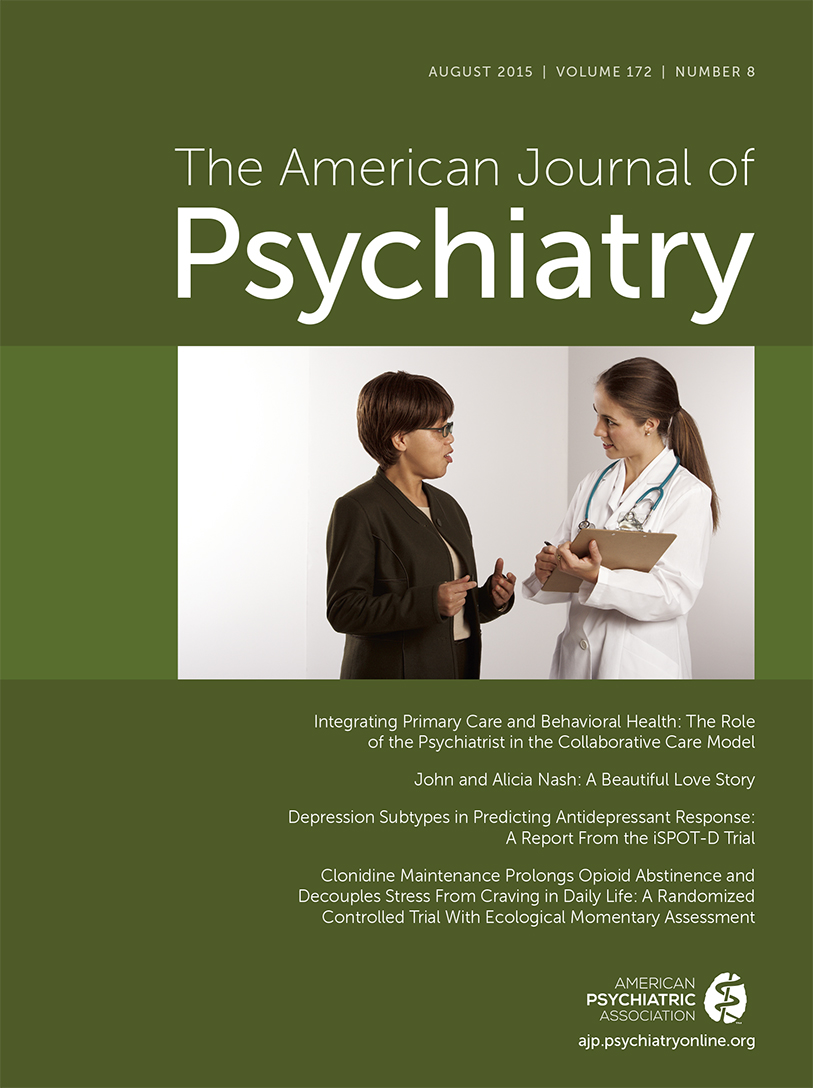Depression and Insulin Resistance: Additional Support for the Novel Heuristic Model in Perimenopausal Depression
To the editor: The article by Gordon et al. (1), published in the March 2015 issue of the Journal, proposed a novel heuristic model for the etiology of perimenopausal depression. The model suggests that ovarian hormone fluctuation during menopause transition may cause hypothalamic-pituitary-adrenal (HPA) axis dysregulation, which increases interpersonal vulnerability and psychosocial stress sensitivity leading to added risk of depression.
Diabetes and its precursor, insulin resistance, are associated with depression, but some previous research is in conflict regarding differences in the association by age and gender (2). Furthermore, it has been suggested that the comorbidity of depression and diabetes might be partly explained by shared etiopathogenesis via the HPA axis (3). On the other hand, it has been suggested that menopause-related loss of ovarian function increases insulin resistance (4). Consequently, it is reasonable to hypothesize that the association between depression and insulin resistance appears in women undergoing menopausal transition.
We examined depression symptoms and insulin resistance associations in a prospective study setting using the Northern Finland Birth Cohort 1966 (N=12,231, http://www.oulu.fi/nfbc). We compared the differences in depression symptoms and insulin resistance associations between genders at two time points, at 31 and 46 years (i.e., before and during the menopausal transition) (5).
According to our present findings (Figure 2), depression symptoms and insulin resistance associations are nonexistent in women during reproductive age but emerge during the menopausal transition and are seen statistically significantly in severe depressive symptoms. Depression symptoms and insulin resistance associations are seen at both ages in men, but the association is seen also with moderate symptoms at age 46.

FIGURE 1. Associations Between Insulin Resistance and Depression in the Northern Finland Birth Cohort 1966.a
a Insulin resistance was defined using the homeostasis model assessment for insulin resistance (HOMA2-IR), and depressive symptoms were quantified by the Hopkins Symptom Checklist-25 (HSCL-25) depression subscale. A multinomial logistic regression model was used to calculate odds ratios and 95% confidence intervals (95% CI). Subjects in the highest decile of insulin resistance were compared with the rest. The model was adjusted for education (basic, secondary, and tertiary), smoking (never, ex-smoker, and current smoker), alcohol consumption (grams per day), and physical activity (frequency of brisk physical activity). The authors were given access to the Northern Finland Birth Cohort 1966 database, and these results are based on the data collected at 31 and 46 years (N=5,653 and N=5,021, respectively).
Our results support the novel model (1) by linking in insulin resistance. To our knowledge, this is the first report demonstrating the effect of menopause on depression symptoms and insulin resistance associations. We postulate that the present shift in depression symptoms and insulin resistance associations in women stems from the HPA axis (3, 4) triggered by hormonal fluctuations in menopause transition (1). The nonexistent depression symptoms and insulin resistance associations among women at age 31 may be explained by the protective effect of estradiol on the HPA axis. While fascinating, these findings still leave us observing the phenomenon at a distance because our data do not allow direct pathway scrutiny.
We thank the late professor Paula Rantakallio, who was responsible for the launch of the Northern Finland Birth Cohort 1966; the participants involved in the 31-year-old and 46-year-old studies; and the whole cohort 1966 team, which includes managers, nurses, clerical workers, research scientists, and information technology personnel.
1 : Ovarian hormone fluctuation, neurosteroids, and HPA axis dysregulation in perimenopausal depression: a novel heuristic model. Am J Psychiatry 2015; 172:227–236Link, Google Scholar
2 : A systematic review and meta-analysis of the association between depression and insulin resistance. Diabetes Care 2013; 36:480–489Crossref, Medline, Google Scholar
3 : Relationship of depression to diabetes types 1 and 2: epidemiology, biology, and treatment. Biol Psychiatry 2003; 54:317–329Crossref, Medline, Google Scholar
4 : Loss of ovarian function in the VCD mouse-model of menopause leads to insulin resistance and a rapid progression into the metabolic syndrome. Am J Physiol Regul Integr Comp Physiol 2009; 297:R587–R592Crossref, Medline, Google Scholar
5 : Predicting age at menopause: Hormonal, familial, and menstrual cycle factors to consider. Menopausal Med 2011; 19:S1–S5Medline, Google Scholar



